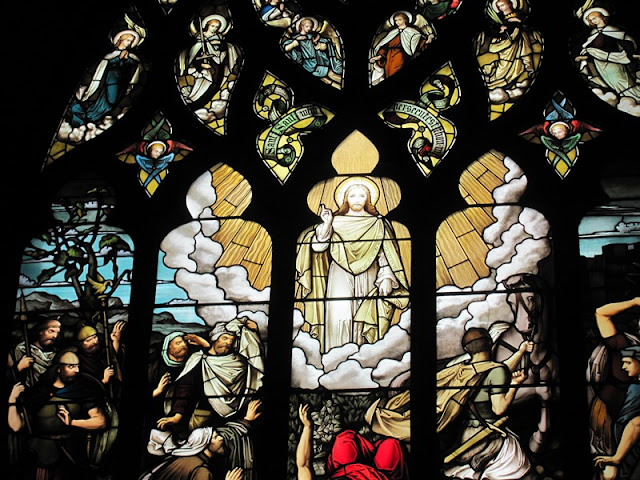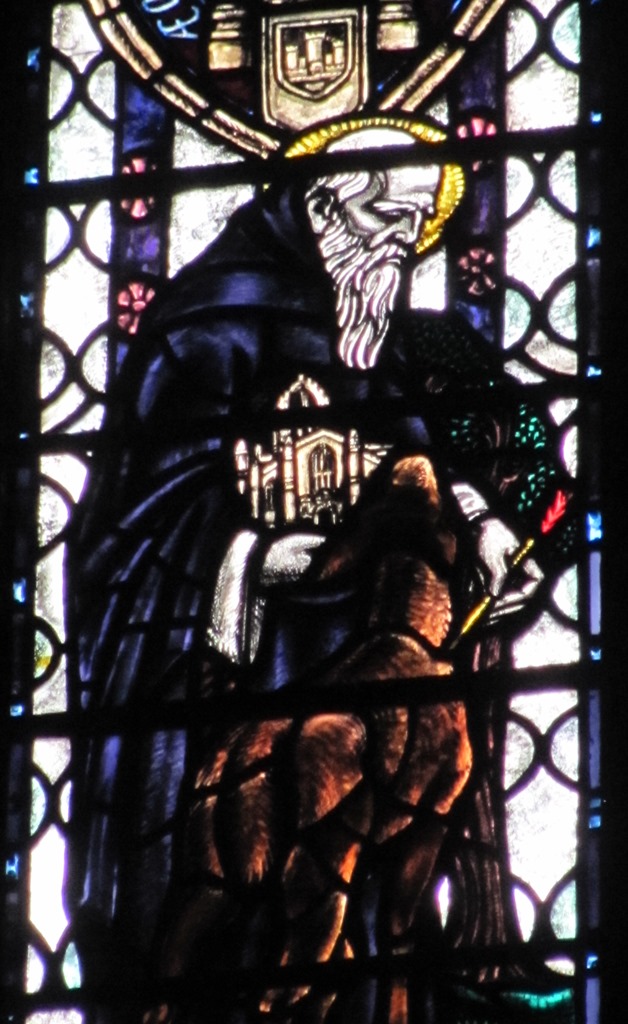The National Trust for Scotland does not routinely allow photographs in the properties it looks after, so I'll start here with thanks to the lovely people of Broughton house who kindly allowed me to take these pictures for my blog.
The main part of the house, which sits back of the road, was built in 1734. It's No 12 The High Street here in Kirkcudbright. In 1740 it was bought bu Alexander Murray of Broughton and Cally, after whom the house is named, along with No 10 next door and the two houses became one.
The house would probably have remained another big house in the High Street if it wasn't that the artist Edward Atkinson Hornel moved into it in 1901. Although born in Australia, to where his parents had emigrated from Kirkcudbright, he returned with the family when he was two years old in 1866 and was brought up in the town. He was an established artist when he moved into Broughton House and attracted many other Scottish artists here which helped give Kirkcudbright a name for art that remains with it to this day. In 1920 he created a trust, that upon his death (which was in 1933), his house would become a public art gallery and library (he had a collection of 15000 books by the time he died). In 1997 the house came into the care of the National Trust for Scotland.
Hornel had the gallery (below) and a large studio built onto the house. The panels you see around the top of the wooden panels are casts of the frieze around the Parthenon (best known as part of the Elgin marbles)
For me the attraction of the house is the great collection of paintings that are kept there, including a number from E.A. Hornel himself. He's probably best known for his paintings of girls out in country settings and his paintings from the orient.
This one is Brighouse Bay, Wild and Burnet Roses. Brighouse bay is just a few miles round the coast from Kirkcudbright.
Hornel left behind a large number of photographic plates, which are currently being printed up. Sitting on the piano in the gallery were these couple of photographs of a young lady who appears to have become the model for two of the girls in the following painting, Balloons at Brighouse Bay
This smaller painting looks as if it has just been lifted out of the painting above. I wonder if it's a study for the bigger painting (there is quite a bit of bare canvas at the bottom).
A photograph from one of his trips to Japan.
Here's some of his paintings based on his travels in the East.
Three smaller paintings which I've put together into one.
The two musicians in the farthest left panel above make another appearance in this painting called Memories of Mandalay
There are a number of sculptures in the gallery. Anyone familiar with Kirkcudbright at all will recognise this as the war memorial which sits outside the castle - only a bit smaller. This is the model made for it by sculptor George Henry Paulin in 1919 (the bigger version in the town was unveiled in 1922).
A Bust if a Girl by Sir William Reid Dick which sits on the rather grand fireplace.
This bust is of Mr Hornel himself. It's by James Pittendrigh MacGillivray in 1889.
A shot from the stairs leading down from the Gallery into the studio.
There are a number of incomplete paintings down here. The one on the easel is about the least complete but there's still something quite charming about it.
In the dining room is a Portrait of a Man in a Red Tunic that Hornel did when he was in Antwerp in 1885. There are very few from this period in the house (it might be the only one). He painted the same old man a few years earlier - it's now in Harrogate. Looking at the two, the old fellow does seem to be more content in Kirkcudbright.
Also in the dining room is this painting of Hornel by Bessie MacNicol. My photo of it has been somewhat hindered by the pane of glass in front of it but here it is on the BBC website. Bessie MacNicol seems to have been somewhat overlooked by Wikipedia, tsk tsk!, but her paintings are worth a look at so here's here BBC page for her and some more information on this blog.
A painting by George Henry, who Hornel went to the Japan with in 1883. This looks more like Scotland to me.
Another difficult to photograph painting by Charles Oppenheimer. This time it is hung on a stairway which was roped off at the bottom - already having been kind enough to let me take pictures, I didn't want to disturb the manager with more requests. Here's a better shot of it. It is apparently the garden of No 14 High Street next door, which Hornel also owned and Oppenheimer rented in 1908.
Downstairs in the Studio is this large painting of Kirkcudbright Harbour
by Oppenheimer which I completely forgot to take a photo of when I was
there. It was painted in 1958, so couldn't have hung in the house when Hornel was alive.
A generation before Hornel the Faed family from nearby Gatehouse of Fleet produced three of Scotland's more prominent painters. Broughton House has a couple of painting hanging by them. This is the Artist's Mother by John Faed.
A Highland Tryst by Thomas Faed.
It would be a shame on a visit to Broughton House not to go out into the garden, especially when Scotland has provided me with a sunny day for the purpose. Hornel seemed to be quite keen on his garden and spent a great deal of effort on it in the years he lived there, probably influenced by much that he had seen in Japan. The house is almost as famous for the garden as for the art collection, so we'll pop through the back door of the studio and I'll leave you with some pictures of it.























































